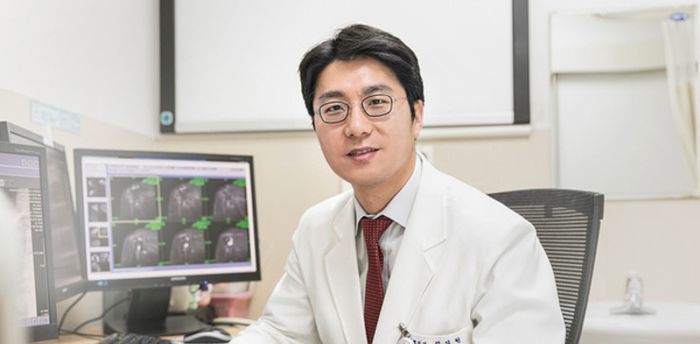Professor Seok-Won Jeong of Konkuk University Hospital’s Orthopedic Surgery Department has proven the effectiveness of treating muscle atrophy using medium and low-frequency stimulation.
“Resolving muscle atrophy through carrier frequency stimulation without lifting weights or causing joint damage.”
Beneficial for elderly patients, stroke victims, paralyzed patients, and ALS patients.

Healthcare platform company M20 announced on the 15th that their medium and low-frequency muscle stimulator has been clinically confirmed to be effective in recovering muscle atrophy.
Professor Seok-Won Jeong of Konkuk University Hospital’s Orthopedic Surgery Department verified the clinical usefulness of M20’s medium and low-frequency muscle stimulator in preventing muscle atrophy during the brace-wearing period following surgical treatment for rotator cuff disease.
The study compared two groups of shoulder surgery patients: the experimental group, which wore the medium and low-frequency EMS device from two weeks post-surgery until the brace was removed, and the control group, which only wore the brace as usual. After rotator cuff surgery, patients typically wear a brace to immobilize the shoulder.
The reason for selecting rotator cuff surgery patients is that the muscle measurement area must be completely fixed to accurately determine if muscle atrophy is prevented and muscle mass increases solely through the medium and low-frequency equipment. Additionally, due to postoperative pain, the intensity of the signal cannot be strong, so results must be derived purely from basic medium and low-frequency stimulation without external movements or weight loads for more objective results.
After approximately two weeks, MRI results showed that the deltoid muscle volume in the experimental group did not decrease and slightly increased, while the control group saw a 10.469% reduction in muscle volume. This indicates that even in immobile situations, muscle atrophy did not occur in the fixed body area. This finding suggests the potential to prevent and treat muscle atrophy in the elderly, paralyzed patients, and ALS patients.
Rotator cuff disease is the most common cause of shoulder pain, often affecting older adults, and is closely related to muscle atrophy and tendon degeneration. Patients over 60 years old frequently experience fatty degeneration or muscle atrophy, leading to poorer treatment outcomes. Typically, patients wear a brace for more than a month post-surgery, significantly limiting shoulder muscle use, which can exacerbate muscle loss and atrophy, complicating rehabilitation and negatively impacting treatment results.
Professor Seok-Won Jeong, who conducted the clinical trial, stated, “This clinical trial confirmed the effectiveness of resolving post-surgery muscle atrophy and promoting rehabilitation. It presents an effective approach for treating muscle atrophy.”
Kim Jin-Gil, CEO of M20, said, “Conventional single low-frequency signals below 100 Hz couldn’t deeply stimulate muscles and required weight training or other exercises to stimulate muscles along with skin irritation. However, M20’s carrier frequency technology, which delivers low-frequency signals through medium frequency, allows for preventing muscle loss and increasing muscle volume without movement or joint strain. This technology is poised to be a key solution for addressing muscle atrophy in the future.”
